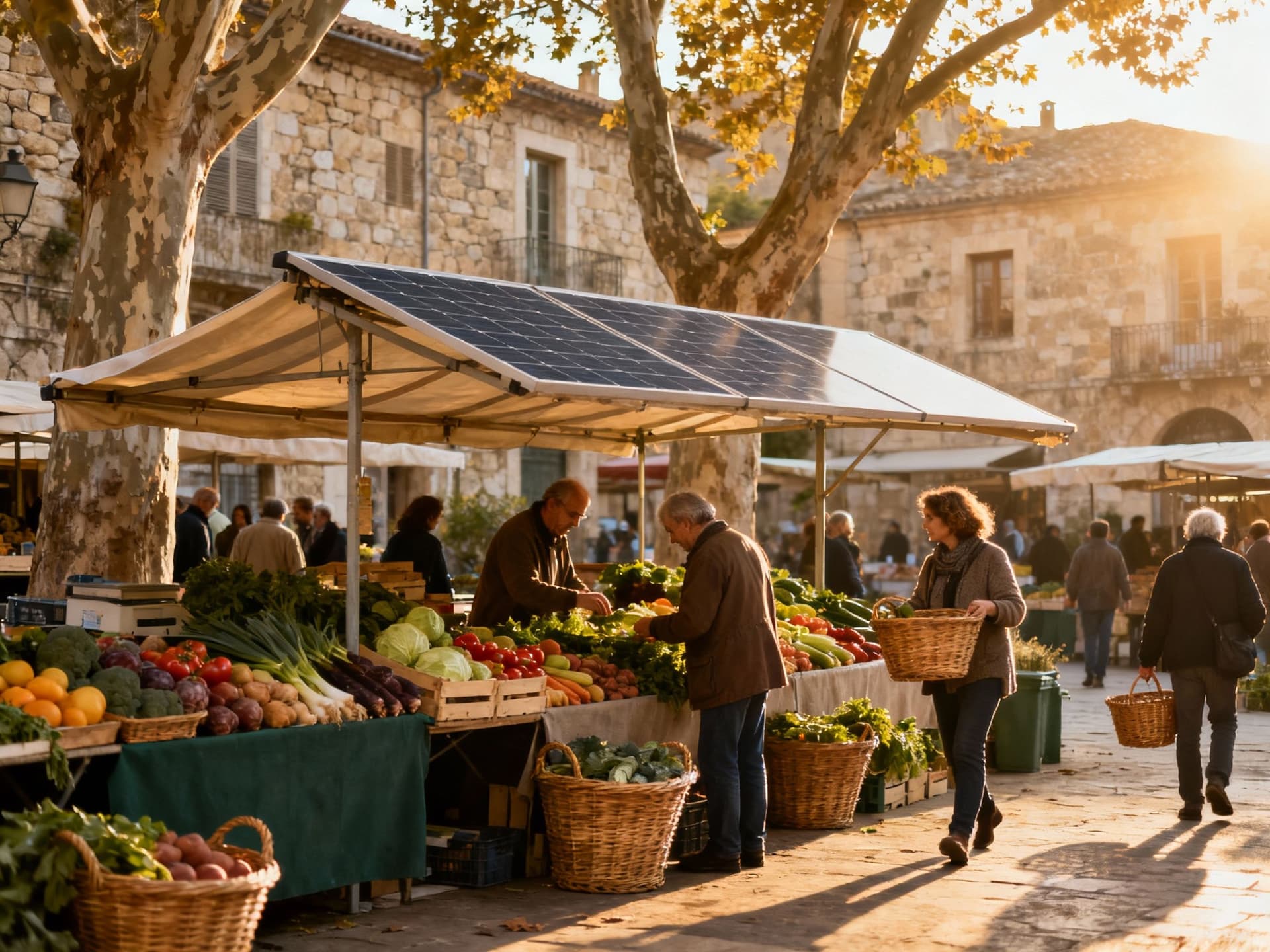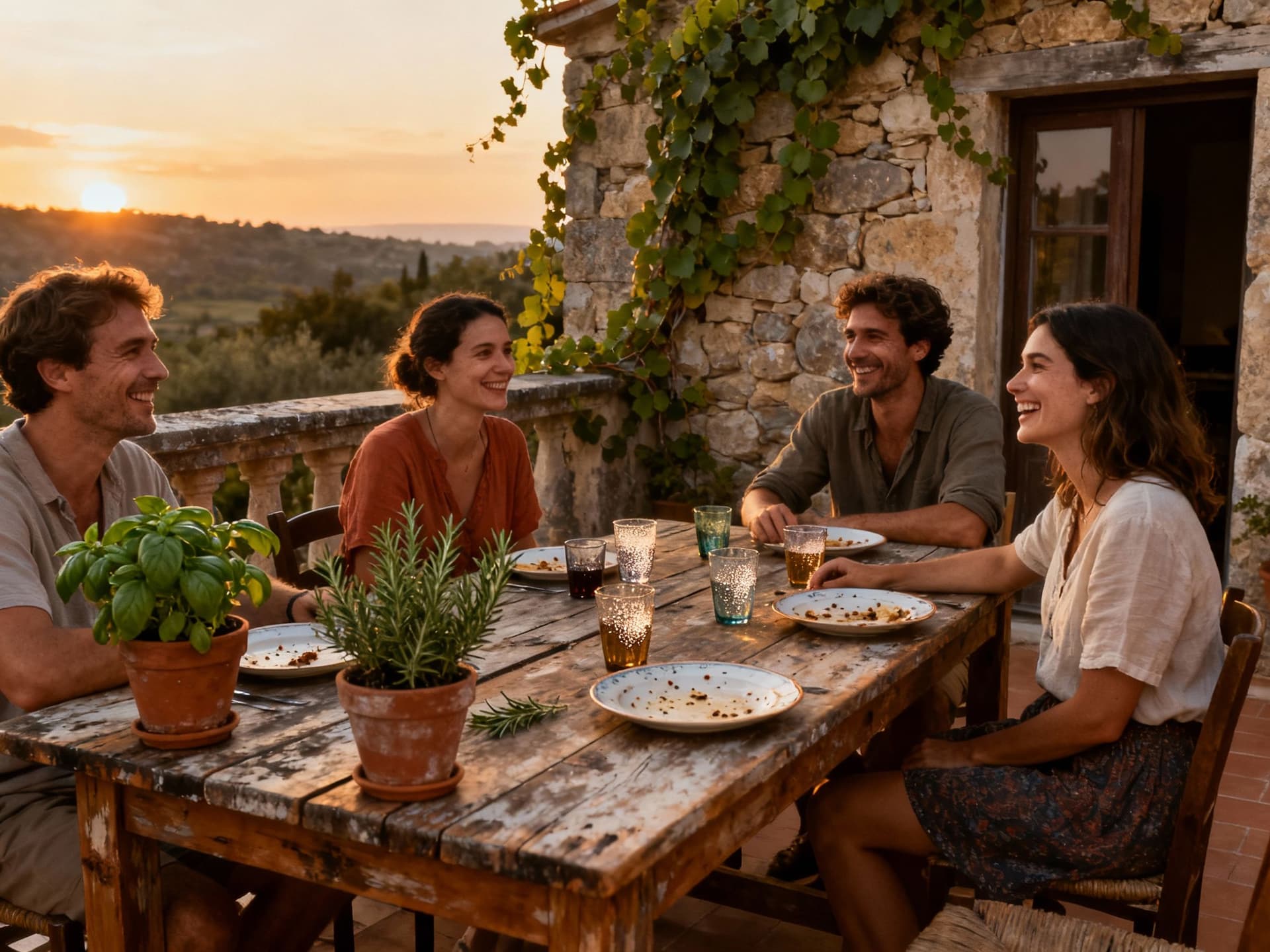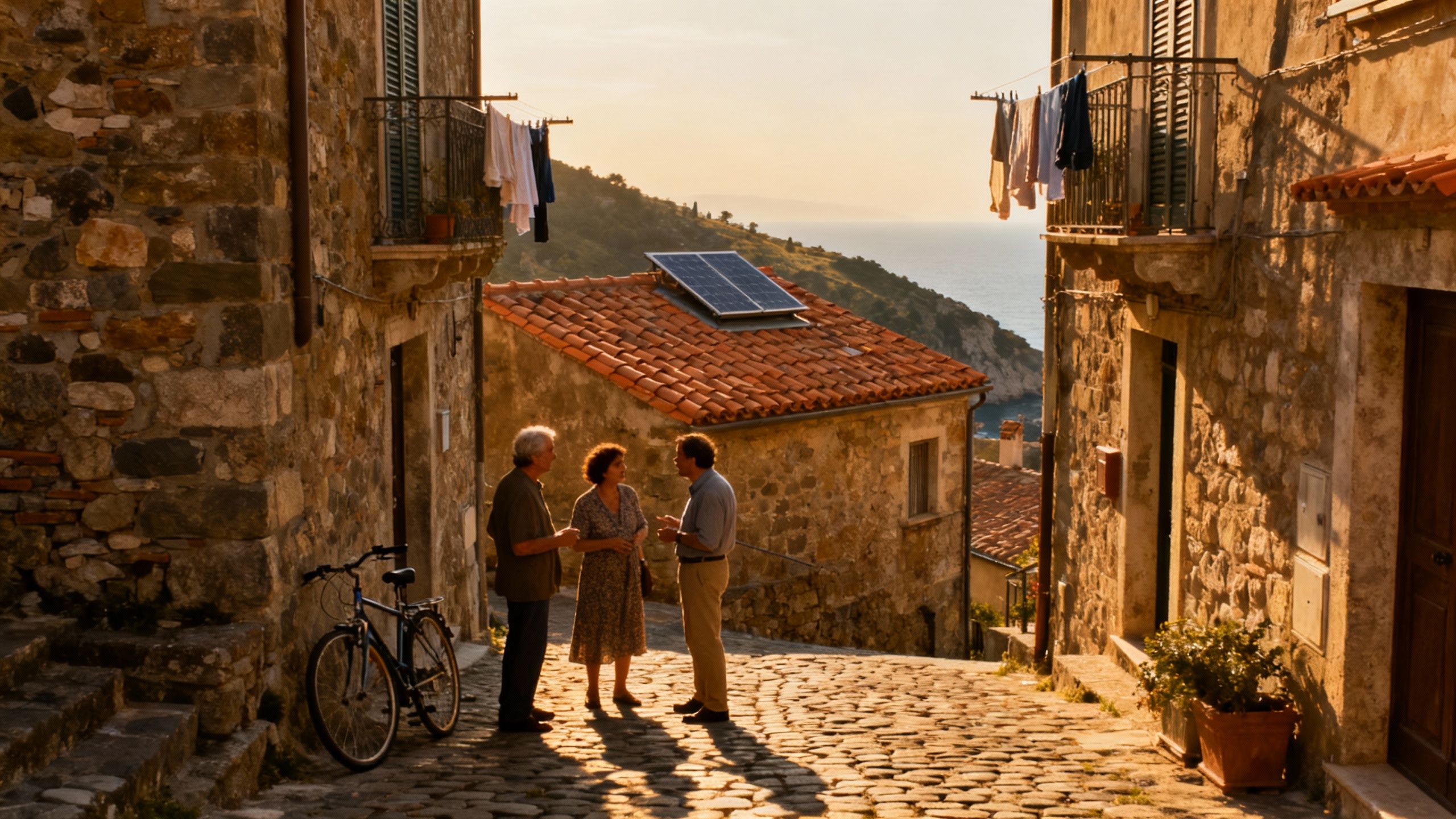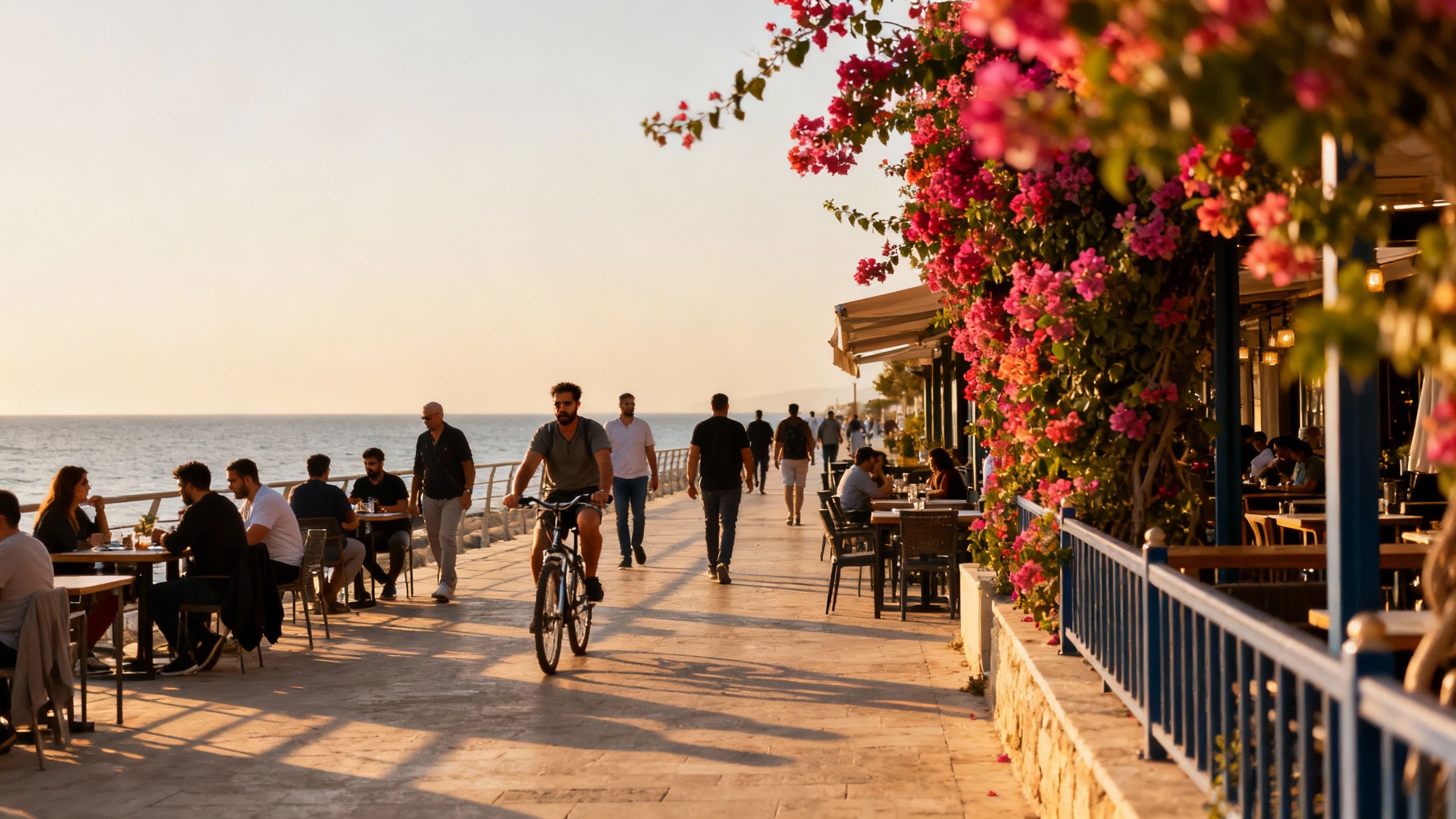Where France’s Green Grid Hides Value
Compare French regions where real green infrastructure—solar co‑ops, retrofits, microgrids—turn lifestyle dreams into lower-cost, future‑proof homes.
Imagine waking before dawn in a stone house on the edge of a chestnut wood, coffee steaming, cicadas still silent, then cycling down to a village market where solar awnings shade crates of apples. That early-morning routine—food sourced within kilometres, sunlight sculpting the day, neighbours who know when the bread oven is hot—is the quietly sustainable life many international buyers picture when they think of France. It’s also the story behind a surprising truth: green infrastructure and energy transition are reshaping where value hides in French property, and not always where you expect.
Living the French green life: from market squares to microgrids

France’s green living is tactile: afternoon shade under plane trees on Rue Gambetta in Montpellier, morning swims at a naturally filtered pond outside Bordeaux, and community solar arrays on municipal roofs in Occitanie. These scenes are made possible by infrastructure—solar canopies, renovated insulation in old stone homes, rainwater gardens in new village squares—that turns daily comfort into low-impact living. For an international buyer, the pleasure is immediate (markets, cafés, coastal walks) and the practical payoff arrives through lower bills and increasing regulatory weight on energy performance.
Neighbourhood spotlight: Bordeaux’s Bastide and riverfront living
Picture riverwalks framed by plane trees, cafés that pause service at the height of summer for sieste, and brownstone homes with vaulted cellars converted into cool storage for local wine. Bastide’s recent push for heat-pump retrofits and bike-priority streets means less car clutter and more morning light in the kitchen. For buyers, that translates to properties that age gracefully: original beams and stonework preserved, combined with discreet green upgrades that matter every winter and every energy bill.
Food, markets and seasonal rhythm: what fuels neighbourhood life
In Brittany, a Thursday market sets the week: scallops on ice, buckwheat galettes, and neighbours who trade gardening surplus. In Provence, lavender fields scent evening wind, and small producers deliver olive oil by bicycle. These seasonal economies shape the homes: courtyards that dry herbs, cellars that store root veg, and terraces oriented for afternoon shade. They’re why buyers talk as much about a market stall as the number of bedrooms—the social infrastructure is part of the green premium.
- Lifestyle highlights you’ll actually use
- Weekly markets (examples: Marché des Capucins, Bordeaux; Marché Forville, Cannes)
- Community solar co-ops and mairie-run retrofit grants in Occitanie and Nouvelle-Aquitaine
- Natural swimming ponds and public green corridors (found increasingly in smaller towns)
Making the move: practical considerations where green infrastructure matters

Lifestyle sells the dream, but the deed needs context. France’s market has shown stability and a 2025 uptick in transactions, and regional variations can be significant. Where local councils invest in renewable projects—community solar, grid upgrades, thermal renovation programmes—homes benefit through lower running costs and rising desirability. That makes region-level green investment an underappreciated factor when comparing similar properties: two fifteenth‑century stone cottages can diverge in total cost of ownership depending on nearby renewable infrastructure and support schemes.
Property styles and how they'll support the life you want
Stone farmhouses with thick walls remain ideal for passive thermal comfort; village houses with south-facing façades suit added solar and thermal panels; urban apartments in renovated Haussmann buildings often benefit most from centralised district heating projects. Choose the property type that matches daily habits: if you love allotment gardening, a maison with courtyard and rainwater capture is priceless; if café life is central, a well-insulated apartment near an urban tram line reduces car dependence and connects you to city amenities.
Working with local experts who know green realities
Find agents who speak both the language of place and the language of retrofit: they’ll point you to properties with existing solar leases, recent insulation certifications, or access to municipal energy schemes. Local notaires and architects familiar with heritage rules can advise on feasible upgrades that respect character and secure energy-class improvements. An eco-literate agent saves months of trial-and-error and identifies the neighbourhoods where green infrastructure is not a slogan but part of daily life.
- Practical steps blending lifestyle and logistics
- Visit a property at different times (high sun, rainy day, evening) to sense insulation, shading, and solar potential.
- Request the DPE (diagnostic de performance énergétique) and check any municipal renewable projects nearby.
- Ask whether rooftop or ground-mounted solar is transferable with the sale (PPAs and lease terms matter).
- Factor retrofit timelines and local grant windows into your negotiation—some councils prioritise first-time renovation applications.
Insider knowledge: myths, missed opportunities and expat realities
Myth: France is already 'done' on renewables because of nuclear. Truth: nuclear dominance means electricity is clean at the grid level, but regional renewable rollouts—solar farms, onshore wind, local bioenergy—are uneven. That creates pockets where homes are more future‑proof and quieter to run. Smart buyers stop at national headlines and instead compare the municipality’s energy plans, local permitting speed, and community energy co-ops.
Cultural nuances that change where you buy
French sellers prize authenticity; many prefer renovations that keep original proportions and materials. That means sympathetic retrofits (like internal insulation or discreet solar tiles) win local support and planning approvals. For expats, learning a few local phrases about reciprocity—attending marché, helping at a village fête—opens doors and clarifies which upgrades neighbours will accept. Homes are part of a network; the social licence to change a roofline can be as crucial as planning permission.
Long-term lifestyle and financial considerations
Properties with strong green credentials are increasingly resilient to policy changes and to tenant demand where rentals are considered. France’s recent rules banning rental of class G properties and the push toward energy performance mean that buyers who prioritise fabric-first upgrades or properties already benefiting from grid renewables avoid forced retrofits later. That’s both a lifestyle win (comfort, health) and a long-term cost consideration.
- Red flags and green promises to watch for
- Solar leases or PPAs that aren’t transferable or are due to expire within a few years.
- DPE ratings that haven’t been updated since pre-retrofit work—ask for receipts and contractor details.
- Municipal plans that show no short-term investment—lack of local grid upgrades may limit future solar or battery integration.
Conclusion: If you dream of golden-hour terraces, neighbourly markets and a lower-carbon daily rhythm, consider how green infrastructure shapes more than bills—it shapes belonging. Start by visiting towns where municipal energy plans match the lifestyle you crave, bring local specialists into early conversations, and test how a place feels in rain and shine. An agent who knows which communes are funding solar co-ops, which notaires understand heritage-plus-retrofit, and where lenders value energy upgrades will turn a French fantasy into a durable, low‑impact home.
Dutch property strategist who helped 200+ families find sustainable homes in southern Europe; expert in legal pathways and long-term stewardship.


